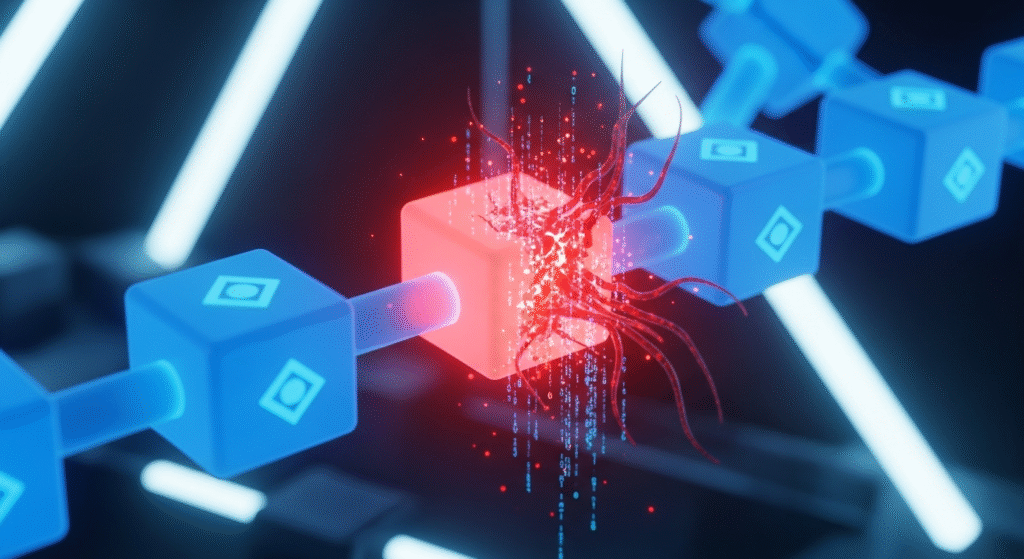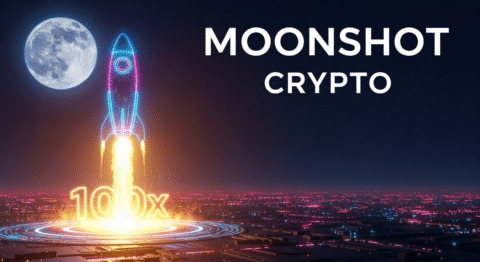How Many Times Have You Wondered Whether That Hot New Altcoin or Meme Coin Was Too Good to Be True?
The allure of quick riches in the cryptocurrency space is undeniable. Every week, new projects pop up promising the moon, and the community buzz around altcoins and meme coins can be infectious. But amidst the excitement, a dark shadow looms: the rampant threat of Rug Pulls. Have you ever scrolled through social media, seen a coin pumping, and felt that irresistible urge to jump in, only to see it plummet to zero shortly after, leaving you with worthless tokens? This predatory practice is a stark reality for many investors, particularly in the volatile altcoin and meme coin markets. Understanding how to identify and avoid these scams is paramount to protecting your hard-earned capital.
Crypto Market Overview: A Whirlwind of Volatility and Innovation
The cryptocurrency market is a dynamic ecosystem, constantly evolving with new trends and technological advancements. Altcoins, essentially any cryptocurrency other than Bitcoin, form the vast majority of the crypto landscape, offering diverse functionalities from smart contracts to decentralized finance (DeFi) applications. Meme coins, often born from internet culture and social media trends, have surged in popularity, demonstrating the power of community and viral marketing.
Recent market indicators show a continued interest in altcoins, especially those with strong utility and development teams. The total market capitalization of altcoins often fluctuates significantly, reflecting investor sentiment and broader economic factors. Meme coins, while often driven by hype, have also shown surprising resilience, with some establishing themselves as legitimate, albeit highly speculative, investment vehicles. Airdrops, a common marketing strategy where new tokens are distributed freely to existing crypto holders, remain a popular way for projects to gain traction and build communities. However, these events too can be targets for malicious actors looking to exploit unsuspecting users..

The Core Concept: Understanding the Landscape
What Are Altcoins, Meme Coins, and Airdrops?
Let’s break down these fundamental terms to ensure clarity.
Altcoins: The term “altcoin” is short for “alternative coin” and refers to any cryptocurrency that is not Bitcoin. Bitcoin, the first and most dominant cryptocurrency, has paved the way for thousands of other digital currencies, each with its unique features, use cases, and technological underpinnings. Altcoins can range from established projects with significant market capitalization and utility, like Ethereum (ETH) with its smart contract capabilities enabling DeFi, to highly experimental and niche tokens. Their purpose is incredibly varied, aiming to improve upon Bitcoin’s design, offer new functionalities, or serve specific industries, such as supply chain management, gaming, or digital identity.
Meme Coins: Meme coins are a subcategory of altcoins that are typically inspired by internet memes, jokes, or viral trends. Their value is often driven more by community sentiment, social media hype, and speculation than by inherent utility or fundamental technological innovation. Examples include Dogecoin (DOGE), Shiba Inu (SHIB), and countless others that emerge regularly. While some meme coins aim to develop utility over time, their initial surge and sustained popularity are often rooted in their cultural relevance and the collective enthusiasm of their holders.
Airdrops: An airdrop is a promotional tactic used by cryptocurrency projects to distribute a certain number of their native tokens to multiple wallet addresses. This is typically done to raise awareness of a new coin, to incentivize the adoption of a new blockchain, or to reward early supporters. Users might receive airdropped tokens simply for holding a specific cryptocurrency at a certain time, for joining a project’s social media channels, or for performing simple tasks. While often a legitimate way to discover new projects, airdrops can also be a vector for scams, where attackers try to steal private keys or trick users into interacting with malicious smart contracts.
Key Components & Technologies
The underlying technology of these cryptocurrencies is crucial to understanding their viability and security.
- Blockchain Technology: The vast majority of altcoins and meme coins operate on a blockchain, a distributed, immutable ledger that records transactions across a network of computers. This decentralized nature enhances security and transparency. Different blockchains utilize various consensus mechanisms, such as Proof-of-Work (PoW) or Proof-of-Stake (PoS), each with its own set of advantages and disadvantages regarding speed, energy consumption, and security.
- Smart Contracts: Many altcoins, particularly those built on platforms like Ethereum, leverage smart contracts. These are self-executing contracts with the terms of agreement directly written into code. They automate the execution of agreements and transactions, enabling complex decentralized applications (dApps) and DeFi protocols. The security of these smart contracts is paramount; vulnerabilities can lead to substantial losses.
- Tokenomics: This refers to the economic model of a cryptocurrency token. It encompasses factors like the total supply, distribution mechanisms, inflation/deflationary policies, and utility within its ecosystem. Well-designed tokenomics are essential for a token’s long-term sustainability and value appreciation. Poorly designed or deliberately manipulative tokenomics are often a red flag for potential Rug Pulls.
The Data-Driven Perspective: Unpacking Market Realities
Market Data & Trends
Analyzing market data provides crucial insights into the health and trajectory of altcoins and meme coins. While precise real-time data for every emerging token is impossible to track exhaustively, general trends are observable.
- Altcoin Market Dominance: Historically, the market dominance of altcoins, calculated as the total market capitalization of all cryptocurrencies excluding Bitcoin, fluctuates. When Bitcoin experiences significant price appreciation, its dominance often increases. Conversely, during altcoin seasons, their collective market share rises, indicating increased investor interest and capital inflow into these alternative assets. According to CoinMarketCap and CoinGecko data, altcoin market dominance has ranged from below 20% to over 70% in different market cycles.
- Meme Coin Volatility: Meme coins are characterized by extreme price volatility, often experiencing parabolic pumps followed by swift crashes. Their market capitalization can surge from millions to billions within weeks due to social media campaigns, only to shed significant value just as rapidly. Data from CoinGecko often highlights the top-performing and worst-performing meme coins, showcasing the high-risk, high-reward nature of these assets. For instance, during the peak of the 2021 bull run, meme coins accounted for a substantial portion of the overall crypto market cap, demonstrating their allure.
- Airdrop Engagement: Tracking the number of participants in popular airdrops can offer clues about market sentiment and user engagement with new projects. Larger airdrop campaigns with thousands or even millions of participants suggest growing interest in emerging technologies or specific niches within the crypto space. However, it’s also important to note that high participation can sometimes be driven by speculative interest rather than genuine belief in the project’s long-term vision.
Tokenomics & Market Health
Tokenomics is a critical lever for manipulating or sustaining the value of a cryptocurrency. A deep dive into a project’s tokenomics can reveal potential red flags.
- Total Supply and Distribution: An excessively large total supply can lead to inflation and dilute the value of individual tokens. Conversely, a very low supply might be desirable for scarcity. The distribution of tokens is even more crucial. If a large percentage of the total supply is held by the project developers or a small group of early investors (“whales”), they could potentially manipulate the market by dumping their tokens, leading to a Rug Pull. Look for a wide and fair distribution among community members.
- Utility and Demand: Does the token have a real-world use case or utility within its ecosystem? Tokens used for governance, staking, paying for services, or accessing specific features generally have a more solid foundation. Meme coins often lack inherent utility, relying solely on community support and speculative trading. Data on transaction volume, active users on the platform, and the number of tokens locked in DeFi protocols can indicate demand.
- Vesting Schedules: For newly launched tokens, vesting schedules for the development team and early investors are crucial. A vesting schedule means tokens are released gradually over time, preventing a large dump of tokens immediately after launch. Projects without clear vesting schedules, or those claiming to have no lockups, are often riskier.
- Liquidity: In decentralized exchanges (DEXs), liquidity pools are essential for trading. A project that launches with shallow liquidity in its trading pairs is vulnerable to price manipulation and can make it difficult for investors to sell their tokens. Check the amount of liquidity provided and the “rug pull index” (if available) on platforms like CoinGecko or CoinMarketCap.
Risks, Challenges & Competition
Risks of Altcoins and Meme Coins
Investing in altcoins and meme coins, especially those with a history of Rug Pulls, carries significant risks beyond general market volatility.
- Extreme Volatility: As mentioned, meme coins in particular can experience astronomical price swings in very short periods. This makes them highly speculative assets, and fortunes can be made or lost in a matter of hours. Altcoins with less established utility also suffer from significant volatility compared to Bitcoin.
- Liquidity Scarcity: Many new altcoins and especially meme coins launch with low liquidity on decentralized exchanges. This means there aren’t enough buyers or sellers to absorb large trades, making the price easily manipulated. If a project’s liquidity is removed, it can become impossible to sell your tokens, effectively trapping your investment. This is a classic tactic in Rug Pulls.
- Unproven Technology and Use Cases: While some altcoins offer innovative solutions, many are simply copies or variations of existing projects with little to no original technology or a clear path to adoption. Meme coins, by definition, often lack any real-world utility, making their long-term value purely speculative.
- Security Vulnerabilities: Smart contract bugs or exploits can lead to the theft of all funds within the contract, including your investment. Audited smart contracts are a good sign, but even audited contracts can have flaws.
- Regulatory Uncertainty: The regulatory landscape for cryptocurrencies, particularly altcoins and meme coins, is still evolving. Future regulations could impact the trading, legality, or utility of these assets.
- Scams and Malicious Actors: The ease of creating new tokens means that fraudulent projects, including numerous Exit Scams, are prevalent. These actors create tokens with the sole intention of defrauding investors.
How Do Altcoins and Meme Coins Stack Up Against Competitors?
When considering an altcoin or meme coin, it’s crucial to assess how it differentiates itself from existing projects and what unique value it offers.
| Feature | Bitcoin (BTC) | Ethereum (ETH) | Typical Altcoin (Utility Focus) | Typical Meme Coin |
|---|---|---|---|---|
| Primary Use | Store of Value, Digital Gold | Smart Contracts, DeFi, NFTs, dApps, Global Settlement Layer | Specific Industry Solutions, DeFi, NFTs, Gaming, etc. | Community, Hype, Speculation |
| Technology | Proof-of-Work (PoW), Secure, Established | Proof-of-Stake (PoS), Smart Contracts, Large Ecosystem | Varied consensus, Smart Contracts, Niche Applications | Often ERC-20 on Ethereum or similar, basic functionality |
| Tokenomics | Capped Supply (21M), Halving | Inflationary (post-Merge), Utility for Gas Fees | Varies widely; can be inflationary, deflationary, utility-driven | Often high supply, inflationary, little to no utility |
| Volatility | High, but lower than most altcoins/meme coins | High | High | Extremely High |
| Risk Level | Relatively Lower (compared to altcoins/meme coins) | Moderate-High | High | Very High |
| Community | Large, Decentralized, Strong ideological base | Large, Active Developer & User Community | Varies; dependent on project utility and adoption | Driven by social media hype and viral marketing |
| Scam Potential | Very Low (due to maturity and decentralization) | Low (for the core protocol, but dApps can be risky) | Moderate to High | Very High |
As you can see, while Bitcoin and established altcoins like Ethereum have specific roles and technological advancements, meme coins often lack fundamental justifications for their valuation, making them highly susceptible to manipulation and Exit Scams.
The Future Outlook: What’s Next?
What’s Next for Altcoins and Meme Coins?
The future of altcoins and meme coins is a tale of two paths. For altcoins, the trend is increasingly towards utility and real-world problem-solving. We can expect to see continued innovation in areas like:
- Scalability Solutions: Projects focusing on layer-2 scaling solutions and faster transaction speeds will likely gain traction as the demand for efficient blockchain networks grows.
- DeFi Evolution: Decentralized finance will continue to mature, with altcoins supporting new financial instruments, insurance products, and lending protocols.
- Interoperability: As different blockchains grow, solutions that allow seamless communication and asset transfer between them will become increasingly important.
- Web3 Integration: The development of decentralized applications, metaverse projects, and NFTs will continue to drive the demand for utility tokens on various blockchains.
Meme coins, on the other hand, will likely remain highly speculative and trend-driven. While some might evolve to incorporate utility or build strong, sustainable communities, the majority will probably fade away or exist as purely speculative assets. The success of meme coins in the future may depend on their ability to cultivate genuine community engagement beyond fleeting internet trends, a challenge that many have yet to overcome.
As for airdrops, they will continue to be a popular marketing tool. However, as scams become more sophisticated, users will need to be increasingly vigilant. Projects demonstrating genuine value and having clear, audited mechanisms for airdrop distribution will stand out from the noise.
Conclusion: Navigating the Crypto Frontier Safely
The cryptocurrency market, with its vibrant altcoin and meme coin sectors, offers exciting opportunities but also presents significant risks. Understanding the nature of these assets, from their technological underpinnings to their tokenomics and market dynamics, is crucial. By being informed and diligent, you significantly reduce your exposure to potential Rug Pulls and malicious Exit Scams.
Did this guide help you understand the risks and strategies for navigating the altcoin and meme coin markets? Share your thoughts and experiences in the comments below! What are your favorite ways to research new crypto projects? For more in-depth crypto analysis and guides, subscribe to our newsletter and never miss an update on the ever-evolving world of digital assets.
FAQs
Q1: What is the most common type of rug pull?
The most common type of Rug Pull in altcoins and meme coins is when developers inject liquidity into a decentralized exchange (DEX) trading pair, create massive hype, and then suddenly withdraw all the provided liquidity, making the token’s price plummet to zero and leaving investors unable to sell their holdings. This is often executed by developers who retain a significant portion of the tokens, which they then dump on the market. Another method involves malicious smart contracts disguised as legitimate token contracts, which can drain all connected user funds.
Q2: How can I identify a potential rug pull before investing?
Identifying a potential Rug Pull requires thorough research. Look for red flags such as: a lack of transparency from developers, no clear roadmap, a large percentage of tokens held by the team, unusually high APY staking rewards (often unsustainable), aggressive marketing with unrealistic promises, locked liquidity that can be unlocked by developers, unverified smart contracts, or the absence of a whitepaper or a poorly written one. Always check community sentiment, but be aware that hype can be manufactured.
Q3: Are all new altcoins and meme coins scams?
No, not all new altcoins and meme coins are scams. Many projects offer genuine innovation, utility, and have dedicated communities. However, the barrier to entry for creating a new token is very low, which unfortunately attracts a significant number of fraudulent projects. It’s crucial for investors to conduct thorough due diligence rather than blindly following hype.
Q4: What is the role of a liquidity pool in crypto trading and how does it relate to rug pulls?
A liquidity pool is a collection of cryptocurrency tokens locked in a smart contract on a decentralized exchange (DEX), used to facilitate trading. Traders swap one token for another within the pool. For example, a WETH/XYZ token pool allows users to trade Wrapped Ether (WETH) for the XYZ token. Rug Pulls often occur when developers, who are also liquidity providers, remove their tokens from the liquidity pool. If they provided all the liquidity for a specific token (e.g., all the XYZ tokens in the pool), and then remove it, the WETH side remains, but the XYZ token becomes worthless and untradeable.
Q5: What are the best resources for researching altcoins and meme coins?
Reputable resources include:
- CoinMarketCap and CoinGecko: For market data, tokenomics, project information, and community links.
- Blockchain Explorers: Such as Etherscan (for Ethereum-based tokens) to view transaction history, token holders, and contract details.
- Project Whitepapers: To understand the project’s goals, technology, and token utility.
- Community Channels: Official Telegram, Discord, and Twitter accounts to gauge community engagement and developer responsiveness, but critically analyze this information for manufactured hype.
- Crypto News and Analysis Sites: Reputable platforms that provide news and fundamental analysis.
- Smart Contract Auditing Firms’ Websites: To check if a project’s smart contracts have been audited and by whom.






